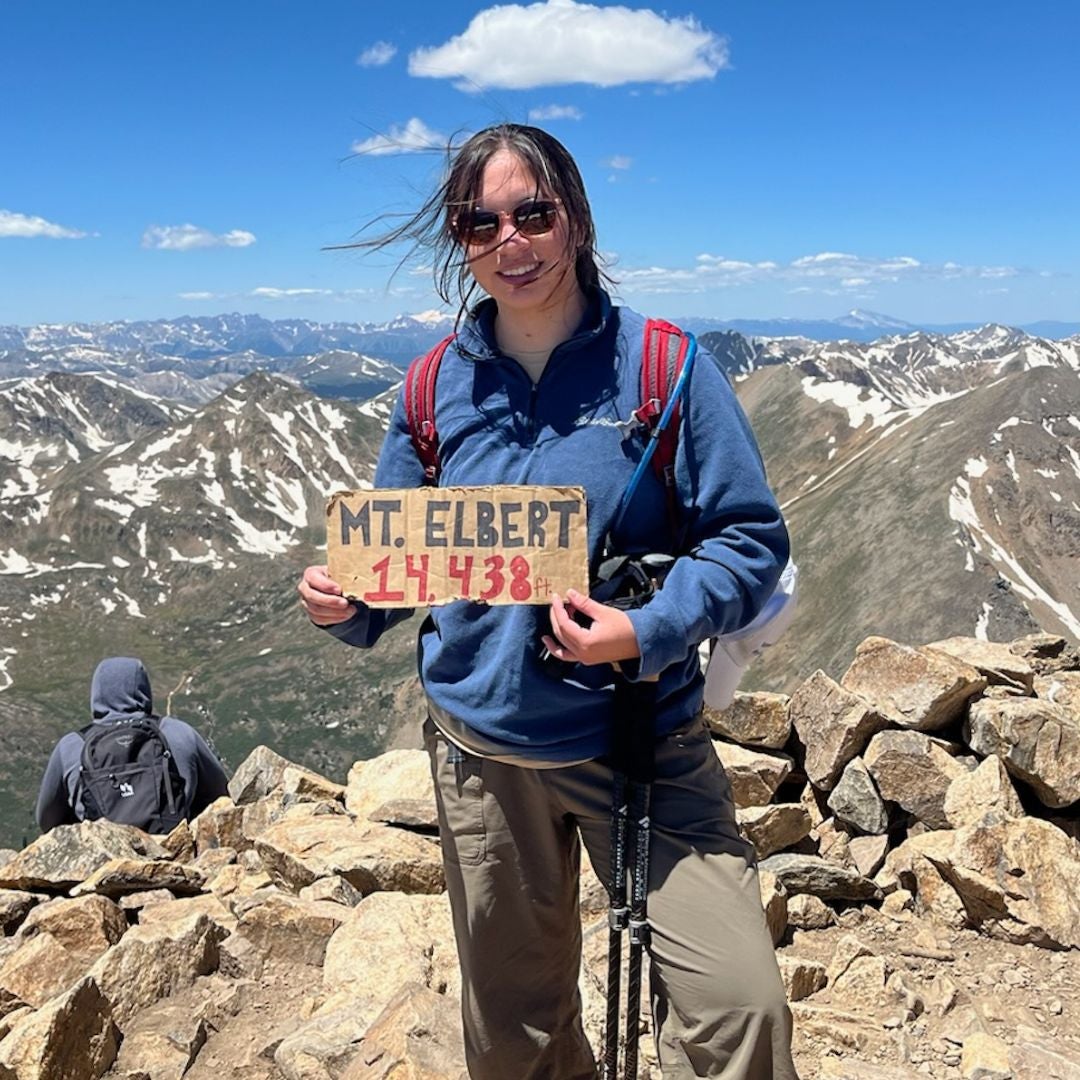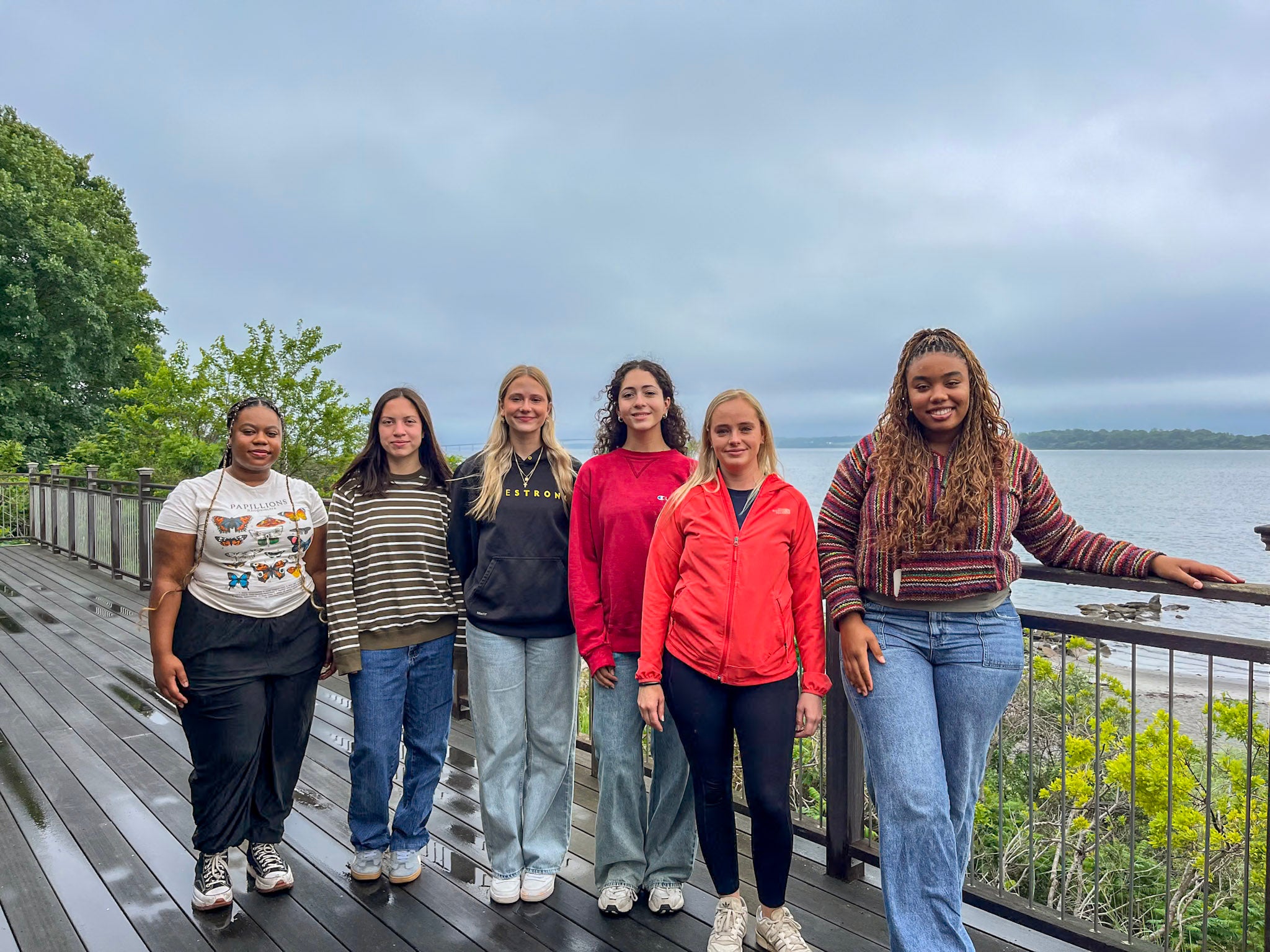The Summer Undergraduate Research Fellowship in Oceanography (SURFO) program is a multi-week research experience designed primarily for science, math and engineering students. Participating students get hands-on experience with laboratory work, field work, data analysis, instrument development, numerical modeling and even a research cruise on Narragansett Bay – all while working with GSO faculty and graduate student mentors.
We are excited to welcome students who will be joining the Bay Campus community for the 2025 SURFO season:

Holly Berg
Bristol Community College, Life Science Biology Program
This summer I will be working with Dr. Hongjie Wang and Abigail Baskind to simulate acidification in Narragansett Bay by using Regional Biogeochemical Model Development and Tuning. I hope to continue to pursue my education in marine biology and gain more experience with coding, and possibly further my education with graduate school.

Veronica Cimento
Roger Williams University, Marine Biology B.S. Major, Math Minor
I am excited to be a part of GSO’s 2025 SURFO program. I will be working with Dr. Veronica Berounsky this summer to analyze the recovery of the Narrow River watershed following an anoxic water ventilation. In the future I plan on doing more marine research and conservation work.

Brooklyn Harvey
Arizona State University, double major in Astrobiology and Biogeosciences and Coastal and Marine Sciences
I am working at the NOAA Narragansett Lab with Dr. Anna Mercer and Mary Kate Munley on the commercially-important species, Northern shortfin squid (Illex illecebrosus). I will dissect squid to learn about their growth and gonad development and review deep sea exploration footage to characterize squid behavior outside the squid fishing grounds. My goal is to continue my education into grad school and combine my oceanography knowledge and astrobiology skills.

Kelly Owens
UMass Boston, Environmental Science B.S.
I’m joining Dr. Becky Robinson’s lab, where I will process water samples from a Southern Ocean cruise for nitrogen isotope analysis. I will work with my mentor, Kristin Kimble, to analyze samples and interpret data using various lab techniques and equipment including a mass spectrometer. I will also participate in an experiment culturing living diatoms to study their silicon shell growth under nutrient controlled conditions. I plan to apply to graduate school and continue building on the skills I am gaining through SURFO.

Madison Shaw
Worcester Polytechnic Institute, Double Major Computer Science and Business Analytics
I’m working with Dr. Adam Soule and Jacob Tomer to train an AI algorithm to detect different types of geologic features and biology from E/V Nautilus footage collected near and on Nafanua, a volcanic dome, in the crater of Vailulu’u seamount. In the future, I’m interested in continuing to study how AI can support research in oceanography.

Chariot Waddell
Howard University, Mechanical Engineering Major, Creative Writing Minor
This summer, I am working under the mentorship of Dr. Mingxi Zhou and Lin Zhao. My project focuses on developing 3D maps that integrate above and below-water data, using LIDAR and Multibeam sonar collected from the WAMV autonomous surface vehicle. My aspiration is to pursue a career in oceanographic engineering. By the end of the summer, I hope to produce a comprehensive report on my findings and gain valuable experience in marine technology and data processing.

